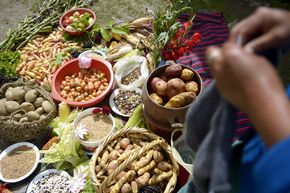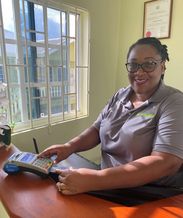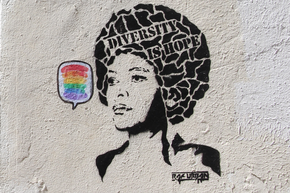Despite increasing uncertainties such as climate change, pandemics or the decline of biodiversity, the tourism industry continues to be insufficiently concerned with risk management. In the Dominican Republic, this is about to change. While local operators signal their willingness to transform tourism into a resilient economy, the government seems to have other plans.
Project to increase destination resilience in Samaná
Destinations need to better prepare for the increasingly frequent crisis events so that they can respond more quickly to acute crises and adapt in the long term to climate change, for example. Together with Futouris, the German Committee for Disaster Reduction (DKKV) studied three pilot destinations and developed strategies to increase resilience in these destinations. The project was part of the BMZ's post-COVID Assistance for Rebuilding Tourism. Samaná in the Dominican Republic was one of the pilot regions. The peninsula in the north-east of the country is popular for its white and pristine sandy beaches and attracts holidaymakers from all over the world. The tropical rainforest with waterfalls and other natural spectacles is also a tourist magnet. "For Samaná, the greatest risks are natural hazards such as hurricanes or earthquakes. But environmental hazards also come from tourism development itself: pollution, mangrove forests destroyed for the construction of new tourism infrastructure and hotels built very close to the beach driving coastal erosion forward. The rapid development of tourism in Samaná, as on the rest of the island, relies on the consumption of land and natural resources," summarises Eva Posch the findings of the regional risk analysis. The researcher works at the University of Innsbruck and supports DKKV.
Samaná's tourism providers aim for more resilience
"The pandemic has opened up an opportunity to make the sector more sustainable and rethink tourism in its current, sometimes harmful form," says Elena Eckert of Futouris. "For this to happen, the government, the private sector and NGOs need to work strongly together. But the local providers must be at the centre when it comes to finding the right strategies. As an outcome of our project in Samaná, local stakeholders have therefore started a Resilience Roundtable. It brings together actors from tourism but also from dependent sectors – from agriculture, fisheries and water management to the taxi driver." At the end of the project, the local partners now have a colorful collection of ideas for increasing their resilience. However, it is up to the local providers themselves to decide which measures they want to implement. "In general, prevention measures are easier to implement for many providers than improvements at a later stage," says Posch. "This includes, for example, regarding possible risks already in the planning of new hotels. If a hotel has already been built on the beach, however, it will most likely not be demolished now for coastal protection and rebuilt further inland. This is very unrealistic and financially hardly feasible, and also questionable from a sustainability point of view.”
Diversification? Not at sight
Like many small island states in the Caribbean, the Dominican Republic is particularly dependent on tourism. Sustainable travel concepts such as nature tourism, hiking or the promotion of longer stays could alleviate the situation. Domestic tourism is another way for the industry to become more diverse and thus more resilient. "In the end, the industry in the Dominican Republic has come through the pandemic pretty well thanks to its domestic tourism, especially in Samaná. Overall, however, international tourists continue to bring the greater purchasing power into the country," says Eckert. For this reason, the Dominican tourism sector continues focusing on international arrivals - with success. Compared to the previous year, the number of international arrivals increased by 271 % in January and February 2022.
Dominican Republic keeps betting on mass tourism
Instead of seizing the opportunity to reboot the tourism industry in a sustainable way, the Dominican Republic apparently still counts on mass tourism. "At a time when it would be appropriate to rethink certain tourism activities as soon as possible in favour of a more resilient economy, the Dominican Republic is experiencing a boom in new hotel projects," says Ernest Cañada Mullor of Alba Sud. The Council for Tourism Development (CONFOTUR) approved US$7.7 billion in tourism investments, with up to 20,000 new rooms to be created, including in Samaná. According to the Central Bank's statistics, this means an increase of 24.7% compared to the number of available rooms in 2019 - before the pandemic. However, this increase in accommodation requires the arrival of 1.3 million more tourist to keep occupancy rates above 70%.
Mullor is highly critical of this strategy: "The Dominican Republic is still focused on sun and beach tourism and is far from diversifying the product. All-inclusive resorts for the foreign market also continue to be planned. This may create jobs and be profitable in the short and medium term, but it is not sustainable. A destination is not just about rooms, and more rooms do not necessarily mean more wealth and development opportunities for the population." For example, jobs in the big bed castles are mostly precarious and poorly paid. Moreover, the pandemic has shown that such great dependence on just one sector of the economy can quickly lead a country to ruin. While projects like the DKKV signal that the tourism sector in Samaná is ready for more sustainable business concepts, the plans of the Dominican Ministry of Tourism blow a completely different horn. To what extent they will reshape local offerings in favour of more resilient tourism in the future remains to be seen.


![[Translate to english:] Mann sitzt am Meer](/fileadmin/tourismwatch/_processed_/8/7/csm_raul-de-los-santos-xeulIueR-FI-unsplash_2_30ca1acda3.jpg)



